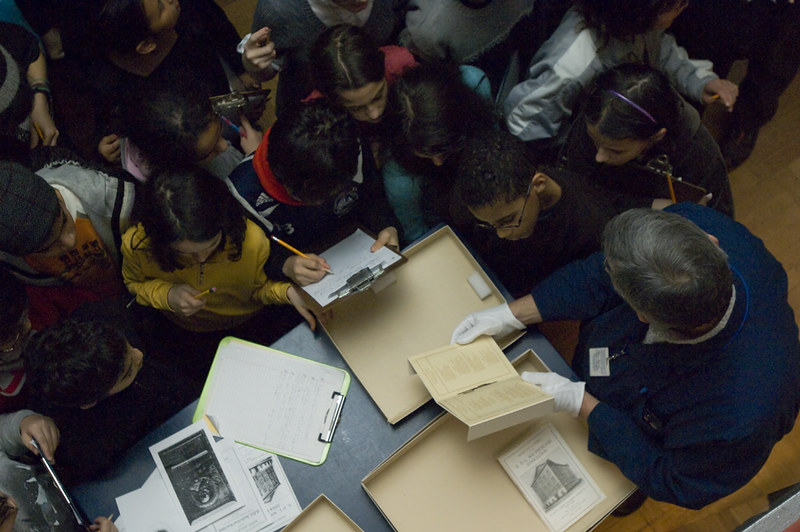
students and schools in focus (photo: William Alatriste/City Council)
It can't be easy to be in charge of New York City schools right now, facing a triple threat of crises: health, financial, and educational. However, our city as a whole can't function without our schools open—until that happens, parents, guardians, and caregivers can't get back to work; businesses across our city can't rely on their employees; and many children can't get the educational, social-emotional, and nutritional support they need.
We know there are increasing numbers of unknown variables—the resilience of the virus across seasons, the emerging science around how it spreads in school communities, its specific effects on children, and the efficacy of our city's testing and tracing programs (just to name a few). And of course, it's paramount to ensure the safety of our children, teachers, staff, and families before we open school. Yet, beyond filling out standardized surveys from the New York City Department of Education and conflicting and vague announcements, the detailed discussion of whether, when, and how to open schools is invisible to most parents and families.
We need hope. We need leadership. We need the Governor, the Mayor, and the City Council to prioritize schools.
We demand a plan—one that’s ambitious, that’s given the resources to meet this moment, and that channels the innovation, creativity, and tenacity of our city to open schools safely and effectively for the benefit of New York City and its people.
1. The plan must show real leadership and transparency. Right now, families are kept guessing, and principals and school leaders are asked to make plans beyond their level of authority. The Governor, the Mayor, and the City Council need to offer real leadership to give direction to the Schools Chancellor and work proactively with the United Federation of Teachers (UFT), parent leadership, and every government agency to move this plan into action.
2. The plan must center on equity by respecting that all families are different. Some families can't send children to school due to health risks, some need to send children so they can go to their jobs or meet their family’s nutritional needs, many have IEPs, siblings, varying rigors with commuting, and differing relationships with or accessibility to technology. Every decision about how we school our kids needs to ask how we are offering agency and partnership to the families that are most vulnerable or have the highest potential to be marginalized. We need to make decisions that proactively counteract that marginalization. Any plan for the fall must ditch a one-size-fits-all approach to education.
3. The plan must lean in to small-group learning. For health reasons, we'll need lower student-teacher ratios. This is something every educator, parent, and caregiver has wanted for decades. To meet this need will require more space, more educators, and more flexibility and creativity with when and where instruction is occurring.
4. The plan must value education more than test scores. In a crisis, there can be a default instinct to go to what's measurable, such as standardized testing. We need to resist that impulse and invest in the social-emotional wellbeing of a student population that is facing real fears and, for many, traumas. The arts, guidance counselors, and mental and physical health are all more, not less, essential.
5. The plan must protect our privacy. Even as we push digital learning as a part of a blended model, our city must only enter into agreements with vendors that keep student data secure, refuse to allow companies to share or monetize data, and allow the right to be forgotten—so that students and families ultimately control how their data follows them.
6. The plan for our children must also be a plan for parents and guardians. It needs to support adults being part-time teachers at home by giving them extended family leave from work, protections around work schedules that flex to accommodate uneven structures of in-person and remote schooling, subsidies for supplemental childcare and enrichment, or other policy measures that allow parents and guardians to support their families without losing their jobs, job security, or financial wellbeing. The plan needs to account for staff, hourly, and independent contractor jobs alike.
There are physical structures, unemployed labor, sources of innovation, and willing and able volunteers all across our city that can be harnessed into a massive and ambitious mobilization to reopen and recreate our schools—if there's the leadership to mobilize them. Our city must tap every public and private partner it can reach to unleash our creativity, ferocity, and determination to make the 2020-2021 school year one where our students and families can safely thrive.
Signed:
Justin Krebs, District 15 Presidents Council / PS 39
Cateia Rembert, President Emerita, District 15 Presidents Council
Megan Butler, President of PS 39 Parents Association
Sara Thompson, President of PS 39 Parents Association
PS 39 Parents Association
Lisa Jackson Zelznick, former President - PS 130 PTA
Mel Boller, PS130 Parkside PTA Co-President
PS 146 Brooklyn New School SLT
PS 146 Brooklyn New School PTA
Amy Tate and Anna Catherine Rutledge, Brooklyn New School PTA Co-Presidents
Maria Fusilero, acting PTA co-president, PS 295
Julie Baron, Member of the PS 39 Executive Board
Laura Limonic, Parent at Community Roots Charter School D-13
Heather Volik, PTA President PS10
Miriam Nunberg, D15
Parents for Middle School Equity
Jackie Cazar, NYC Parent
Melissa Noonan, NYC Parent
Parent Leaders and Parent and Community Organizations can sign on here.
Any member of the public can demand the city and state prioritize a plan by signing on here.
***
Have an op-ed idea or submission for Gotham Gazette? Email This email address is being protected from spambots. You need JavaScript enabled to view it.